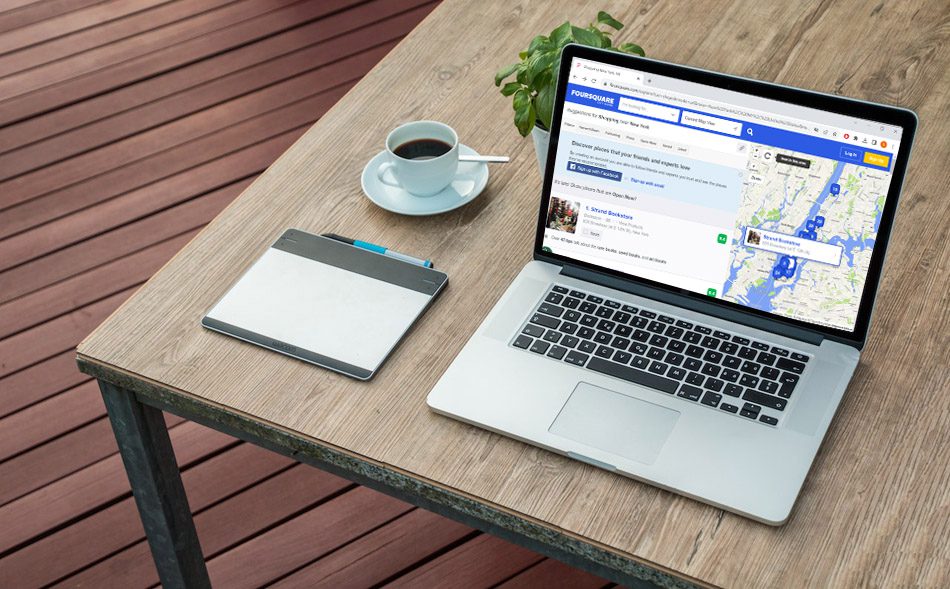Foursquare is a location-based social networking platform that allows users to discover new places and events close to their current location and provides personalized recommendations based on their browsing history. It also facilitates sharing experiences by leaving online reviews about the places people visit, and connecting with their friends.
It lets you check in at various locations, leave reviews, and find recommendations based on your preferences. You can earn points and badges for the total number of check-ins at a place. It provides real-time updates of your friends on Foursquare and tells you where they are and what they are up to. It brings up a list of venues like restaurants, bars, cafes, shopping venues, and other locations near you, and you are allowed to see who else is in the same spot.
However, as you engage with this vibrant online community, ensuring your privacy becomes paramount.
In this blog, we tell you the importance of safeguarding your digital identity, how to ensure privacy on a platform like Foursquare, how you can fortify your online presence, and finally how you contact Foursquare to raise privacy concerns. Read on.
Your personal data is your digital identity, and safeguarding it is crucial. Leaving your name and phone number exposed on Foursquare might lead to unwanted solicitation, marketing emails, or even potential threats like identity theft. Taking control of the information you share can prevent these risks and enhance your online privacy.
How to Remove Your Name and Number?

- Begin by logging into your Foursquare account. In the upper-right corner, click on your profile picture and select “Settings” from the drop-down menu.
- Scroll through the settings to find the “Personal Information” section. Here, you can update or remove the details you have provided, including your name and phone number.
- Carefully follow the prompts to confirm the removal of your name and number. Foursquare may require you to verify your decision to ensure it’s you making the change.
- Explore Foursquare’s privacy settings to manage who can see your check-ins and other activities. Adjust these settings to maintain a balance between sharing and privacy.
- Fine-tune location sharing settings to control how often and with whom your whereabouts are shared. Consider sharing your location only with trusted friends or in specific situations.
- Reviewing Who Can Access Your Information: Regularly review and update the list of people who have access to your Foursquare information. Removing those you no longer interact with can help tighten your digital security.
Additional Tips For Online Privacy Protection

Reduce unwanted contact and marketing — By removing your name and phone number, you can significantly reduce the influx of unsolicited marketing communications.
Minimize the risk of identity theft — Limiting the personal information you share on Foursquare helps mitigate the risk of your data falling into the wrong hands.
Take control of your digital footprint — Every digital interaction leaves a trace. Taking control of your online presence, like removing personal details, empowers you to shape your digital footprint intentionally.
Use a pseudonym instead of your real name — Consider having a creative pseudonym that represents your personality without revealing your real identity.
Provide a general location instead of your exact address — Sharing a city or neighborhood instead of your precise address maintains a level of privacy while still allowing you to engage with the Foursquare community.
Regularly review and update privacy settings — As technology evolves, so do the risks. Stay vigilant by revisiting and adjusting your privacy settings on Foursquare periodically.
Be mindful of what you should share on social platforms — Think twice before sharing personal details that can be used to identify or target you.
Use strong and unique passwords for each account — Securing your account with strong, distinct passwords is your first line of defense against unauthorized access.
Double-check to ensure your name and number are erased — After making changes, verify that your name and phone number have been successfully removed from your Foursquare profile.
Clear cached information from search engines — Search engines might still retain old data. Request removal of outdated information to ensure your privacy efforts are effective.
Stay informed about platform policy changes — Platform policies can change, impacting your privacy. Stay up-to-date to ensure you are adapting to the latest regulations.
Periodically audit your Foursquare privacy settings — Regularly assess your Foursquare privacy choices and update them as needed to align with your current preferences.
Extend privacy measures to other online accounts — What you learn from enhancing your Foursquare privacy can be applied to other social platforms, fortifying your online security across the board.
How to Contact Foursquare?
Should you need assistance or have inquiries about your Foursquare account and privacy settings, you can reach out to Foursquare’s support team via their online contact form or by submitting a support request by accessing their Support Center. You will find answers to the most frequently asked questions about account and privacy settings here. Choose the option that applies to your case, and submit your support request detailing the issue at hand, mentioning your contact details. Wait patiently for a response; you should hear back promptly from their support team.
Sometimes people feel that they stand a better chance of being heard on social media. Foursquare has dedicated support accounts available on Discord and Twitter. Foursquare does not, however, have phone-based customer service, neither does it offer live-chat support.
Conclusion
Taking control of your Foursquare privacy by removing your name and phone number is a proactive step toward securing your digital identity. By following the step-by-step guide and implementing the additional privacy tips provided, you can navigate the online world with confidence, knowing you are safeguarding your personal information from potential threats and unwanted intrusions. Remember, your data, your rules — it is your online journey, after all.

